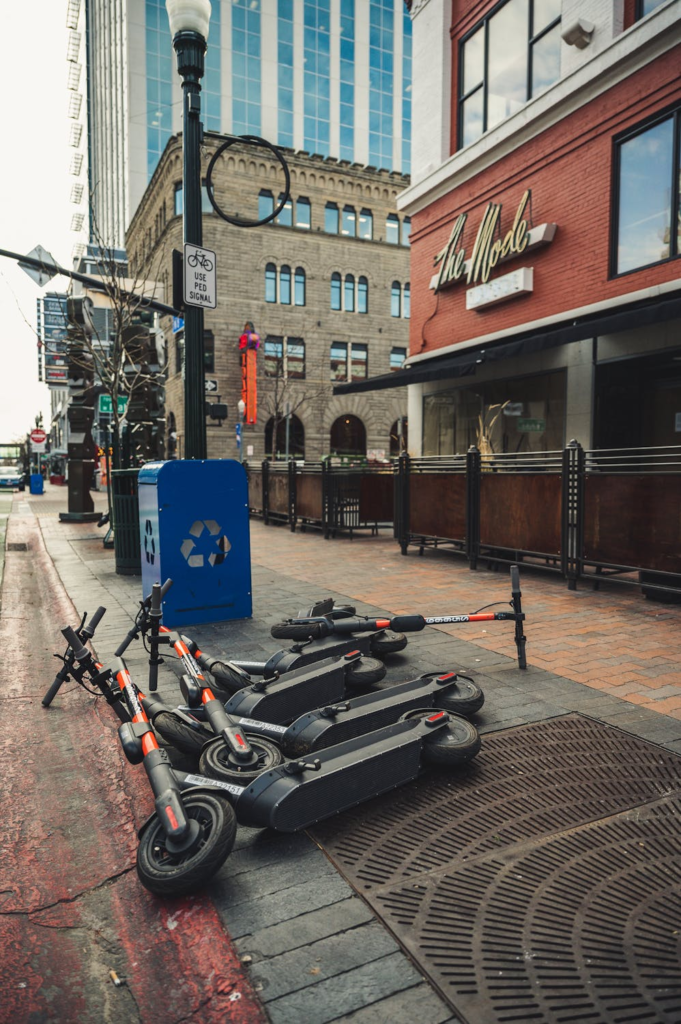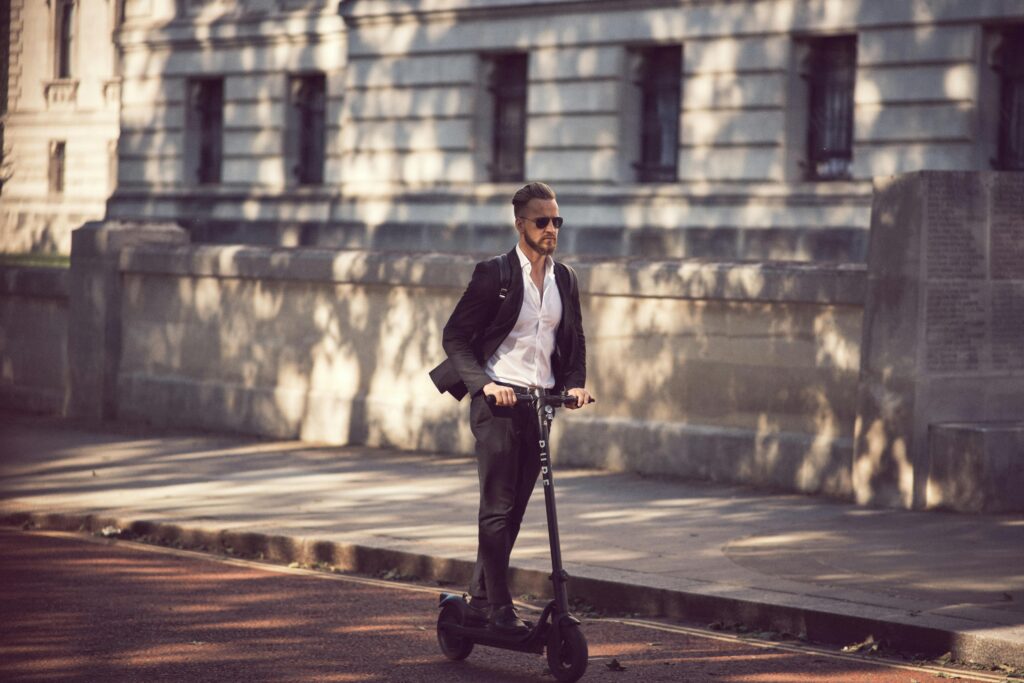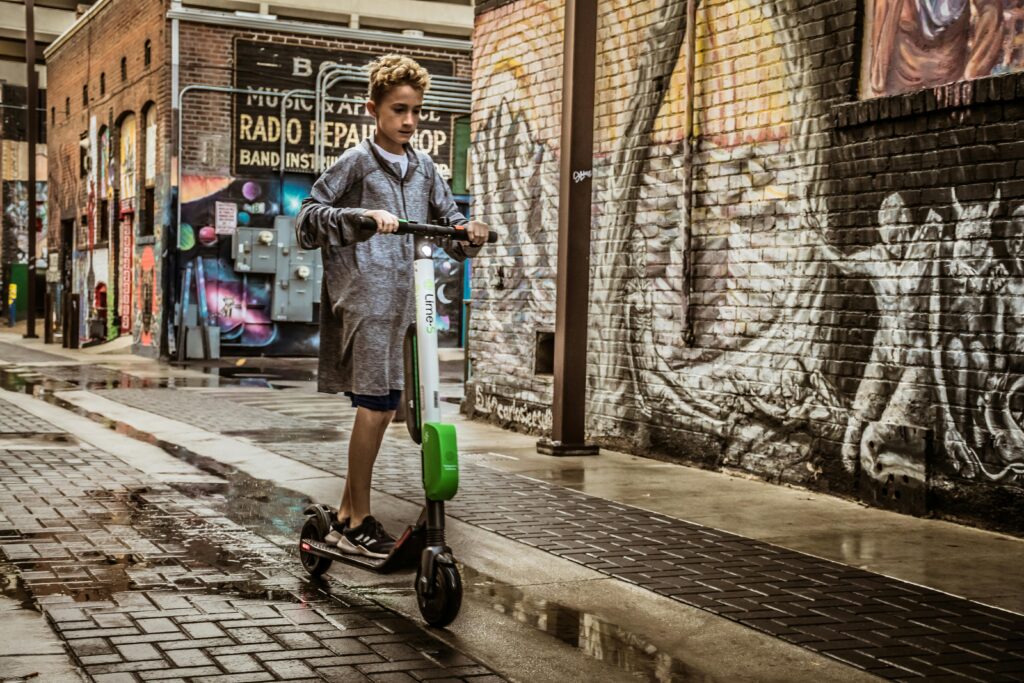Hey there, electric scooter enthusiasts! Want to squeeze every last mile out of your e-scooter’s battery? You’re in the right place! As an avid e-scooter user and tech geek, I’ve spent years tinkering with these zippy little machines. Today, I’m going to share all my secrets on how to maximize your electric scooter’s battery life. Whether you’re a daily commuter or a weekend warrior, these tips will help you go the extra mile – literally 😁!

Let’s face it: the battery is the heart of your electric scooter. It’s what keeps you cruising past traffic jams and arriving at your destination with a smile on your face. But like any heart, it needs proper care to stay healthy and strong. In this guide, we’ll dive deep into everything you need to know about keeping your e-scooter’s battery in tip-top shape. From understanding how it works to advanced maintenance techniques, we’ve got you covered. So, strap on your helmet and let’s get rolling!
Understanding Your Electric Scooter’s Battery
Before we jump into the nitty-gritty of battery care, let’s take a moment to understand what’s actually powering your ride. Knowledge is power, after all – especially when it comes to batteries!
Types of Batteries Used in Electric Scooters
Most modern electric scooters use lithium-ion batteries. These are the same type of batteries you’ll find in your smartphone or laptop. They’re lightweight, pack a lot of power, and can be recharged many times. Some older or budget models might use lead-acid batteries, but these are becoming less common due to their weight and shorter lifespan.
How Electric Scooter Batteries Work
At its core, your e-scooter’s battery is like a tiny power plant. It stores chemical energy and converts it into electrical energy to power your motor. Each time you charge your scooter, you’re reversing this process, turning electrical energy back into stored chemical energy.
One important concept to understand is the idea of charge cycles. A full charge cycle is when you use 100% of your battery’s capacity – this doesn’t have to happen all at once. For example, if you use 50% of your battery one day and 50% the next before recharging, that’s one full cycle. Most lithium-ion batteries are designed to last for hundreds of charge cycles before they start to degrade significantly.

Factors Affecting Battery Life
Now that we know what’s going on inside your scooter’s battery, let’s talk about what affects its performance and lifespan. Spoiler alert: it’s not just about how much you ride!
Temperature: The Goldilocks Zone
Your battery is a bit like Goldilocks – it doesn’t like things too hot or too cold. Extreme temperatures can have a big impact on both short-term performance and long-term health of your battery.
In cold weather (below 32°F or 0°C), your battery’s capacity can temporarily decrease. You might notice your range isn’t as good on those chilly morning commutes. Don’t worry, this is normal and your battery will bounce back when it warms up.
Hot weather, on the other hand, can cause more lasting damage. High temperatures (above 110°F or 43°C) can degrade your battery faster, reducing its overall lifespan. So, if you live in a hot climate, try to store your scooter in a cool place when not in use.
Terrain and Riding Style: The Ups and Downs
Think of your battery like your own energy levels. Just as you’d get tired faster running uphill than walking on flat ground, your battery drains quicker when tackling steep inclines or when you’re constantly starting and stopping.
Hills are particularly demanding on your battery. When you’re cruising up an incline, your motor has to work harder, drawing more power from the battery. Similarly, aggressive acceleration uses more power than gentle speed increases.
Weight and Load: Every Ounce Counts
Just like hills, extra weight makes your motor work harder. The more weight your scooter has to carry – including you and any cargo – the faster your battery will drain. This is why you’ll often see weight limits listed in your scooter’s specs. Exceeding these limits not only drains your battery faster but can also strain other components of your scooter.

Pre-Ride Battery Care
Alright, now that we understand what affects our battery, let’s talk about how to treat it right before we even hit the road.
Proper Charging Techniques
Charging your scooter might seem straightforward, but there are actually a few tricks to doing it right:
- Avoid extreme charges: Try to keep your battery charge between 20% and 80% most of the time. Lithium-ion batteries don’t like being completely empty or completely full for long periods.
- Use the right charger: Always use the charger that came with your scooter or an approved replacement. A charger with the wrong voltage could damage your battery.
- Don’t overcharge: Most modern scooters have systems to prevent overcharging, but it’s still a good idea to unplug your scooter once it’s full.
- Charge at room temperature: Remember our Goldilocks analogy? The same applies to charging. Room temperature is ideal for charging your battery.
Storage Best Practices
If you’re not using your scooter for a while, how you store it can make a big difference to your battery’s health:
- Partial charge for storage: If you’re storing your scooter for more than a few weeks, leave the battery at about 50% charge. This is the sweet spot for lithium-ion batteries.
- Cool and dry: Store your scooter in a cool, dry place. Avoid damp basements or hot garages.
- Regular check-ins: If storing long-term, check on your battery every month or so. If it’s dropped below 20% charge, top it up to around 50%.

During-Ride Battery Conservation
Now we’re getting to the fun part – actually riding your scooter! But did you know that how you ride can have a big impact on your battery life? Let’s look at some techniques to help you go further on a single charge.
Efficient Riding Techniques
- Smooth operator: Smooth, gradual acceleration and deceleration are your friends. Not only does this conserve battery, but it’s also safer and gives you a more comfortable ride.
- Cruise control: If your scooter has a cruise control feature, use it! Maintaining a steady speed is more efficient than constantly varying your speed.
- Regenerative braking: Many e-scooters have regenerative braking, which converts some of the energy from slowing down back into battery power. If your scooter has this feature, try to use it whenever possible instead of the mechanical brake.
Speed Management
While it’s tempting to go full throttle all the time (believe me, I know!), maintaining a moderate speed can significantly extend your range. Most scooters have a “sweet spot” where they’re most efficient – usually around 10-15 mph (16-24 km/h). Experiment with different speeds to find what works best for your scooter.
Route Planning for Battery Optimization
A little planning can go a long way in conserving your battery:
- Avoid hills when possible: If you have the option, choose flatter routes.
- Use bike lanes: These are often smoother than roads, requiring less power to maintain speed.
- Plan for charging: For longer trips, plan your route around available charging stations.

Post-Ride Battery Maintenance
Congratulations, you’ve reached your destination! But wait, your job isn’t quite done. A little post-ride care can go a long way in prolonging your battery’s life.
Cleaning and Inspection Routines
- Keep it clean: Regularly clean your scooter, paying special attention to the area around the battery compartment. Dirt and moisture can cause corrosion on electrical contacts.
- Check connections: Periodically check that all electrical connections are tight and free from corrosion.
- Look for wear: Keep an eye out for any signs of wear or damage to your battery or its casing. If you notice anything unusual, get it checked out by a professional.
Proper Cool-Down Procedures
- Let it rest: After a long or particularly demanding ride, let your scooter cool down before charging. This gives the battery a chance to return to its optimal temperature.
- Avoid immediate charging: Try not to plug in your scooter immediately after a ride, especially if it’s been a hot day or you’ve been tackling a lot of hills. Give it at least 15-30 minutes to cool down first.
Advanced Battery Life Extension Techniques
Ready to take your battery care to the next level? These advanced techniques can help squeeze even more life out of your e-scooter’s power source.
Battery Balancing
In multi-cell batteries like those in e-scooters, not all cells discharge at exactly the same rate. Over time, this can lead to imbalance, where some cells have more charge than others. Many modern scooters have built-in battery management systems that handle balancing automatically. However, if your scooter doesn’t have this feature, you might need to manually balance your battery occasionally.
Balancing involves fully charging your scooter, then leaving it plugged in for an additional 4-6 hours. This allows the charger to top up any cells that might be lagging behind. Check your scooter’s manual to see if this is necessary or recommended for your model.
Firmware Updates
Just like your smartphone, your e-scooter might have firmware that can be updated. These updates can sometimes include improvements to battery management. Check your manufacturer’s website regularly for any available updates.
Using External Battery Packs
For some scooter models, it’s possible to connect an external battery pack for extended range. While this can be a great way to go further on a single trip, it’s important to use only compatible, high-quality battery packs. Using the wrong type of external battery could damage your scooter or even be dangerous.
Troubleshooting Common Battery Issues
Even with the best care, you might occasionally run into battery issues. Here’s how to recognize and deal with some common problems:
Recognizing Signs of Battery Degradation
- Decreased range: If you notice your scooter isn’t going as far on a charge as it used to, this could be a sign of battery degradation.
- Longer charging times: A battery that takes longer to charge than when it was new might be showing its age.
- Swelling or deformation: If you notice any physical changes to your battery, stop using it immediately and consult a professional.
Quick Fixes for Minor Battery Problems
- Reset the battery: Sometimes, simply fully discharging then fully recharging your battery can help resolve minor issues.
- Check for loose connections: A loose connection can cause intermittent power issues. Ensure all connections are secure.
- Clean the contacts: Dirty or corroded contacts can interfere with charging. Clean them gently with a dry cloth or electronics cleaner.
When to Seek Professional Help
If you’ve tried the quick fixes and are still having issues, or if you notice any of these problems, it’s time to consult a professional:
- Unusual noises or smells coming from the battery
- Physical damage to the battery or its casing
- Battery gets unusually hot during charging or use
- Significant or sudden loss of range
Remember, safety first! If you’re ever in doubt about your battery’s condition, it’s always better to get it checked out by a pro.
The Future of E-Scooter Battery Technology
As an e-scooter enthusiast, I can’t help but get excited about what the future holds for our favorite mode of transport. Battery technology is advancing rapidly, and this is great news for e-scooter riders!
Emerging Battery Technologies
Researchers are working on several promising technologies that could revolutionize e-scooter batteries:
- Solid-state batteries: These could offer higher energy density, faster charging, and improved safety compared to current lithium-ion batteries.
- Graphene batteries: These super-thin, super-strong carbon structures could lead to batteries that charge in minutes and last much longer.
- Sodium-ion batteries: A potentially cheaper and more environmentally friendly alternative to lithium-ion, these are already being tested in some e-bike models.
Predictions for Improved Range and Longevity
Based on current trends, here’s what we might expect in the next 5-10 years:
- Doubling or even tripling of current range capabilities
- Charging times reduced to 15-30 minutes for a full charge
- Batteries that can last for 1000+ charge cycles without significant degradation
- Smart batteries that can optimize their performance based on your riding habits
The future looks bright (and long-lasting) for e-scooter batteries!
Conclusion
Wow, we’ve covered a lot of ground – hopefully, you’re feeling charged up about taking care of your e-scooter’s battery! Let’s recap the key points:
- Understand your battery – knowledge is power!
- Be mindful of temperature, terrain, and weight
- Charge smart and store properly
- Ride efficiently to conserve power
- Give your scooter some post-ride TLC
- Don’t be afraid to dive into some advanced techniques
- Keep an eye out for potential issues
Remember, a well-cared-for battery not only lasts longer but also performs better, giving you more enjoyable and reliable rides. By implementing these tips, you’ll be well on your way to maximizing your electric scooter’s battery life.
So, what are you waiting for? Get out there and enjoy the ride, secure in the knowledge that you’re getting the most out of every electron in your battery!
FAQs
Q1: How often should I charge my electric scooter?
A: It’s best to keep your battery between 20% and 80% charge. For most riders, this means charging after each use. Avoid letting the battery drain completely or stay at 100% for long periods.
Q2: Can I use my scooter in the rain without damaging the battery?
A: Most modern e-scooters have some level of water resistance, but it’s best to avoid riding in heavy rain. If you do get caught in a shower, dry your scooter thoroughly afterwards, paying special attention to the battery compartment and electrical connections.
Q3: Is it bad to charge my scooter overnight?
A: Most modern scooters have safeguards against overcharging, so charging overnight is generally safe. However, it’s not optimal for battery longevity. Try to unplug your scooter once it’s fully charged if possible.
Q4: How many years does an electric scooter battery typically last?
A: With proper care, an e-scooter battery can last 2-3 years or about 300-500 charge cycles. However, this can vary widely depending on usage patterns and maintenance.
Q5: Can I replace the battery myself when it eventually dies?
A: This depends on your scooter model and your technical skills. Some scooters are designed for easy battery replacement, while others require professional service. Always check your warranty – attempting to replace the battery yourself might void it.